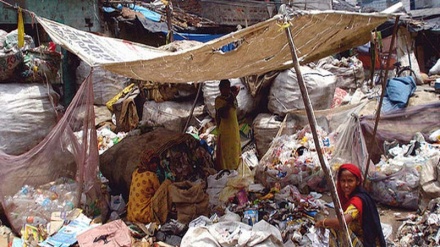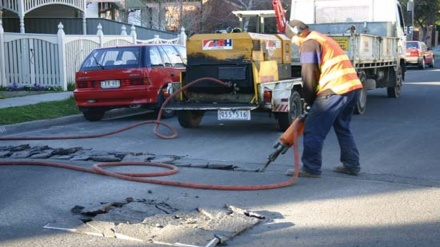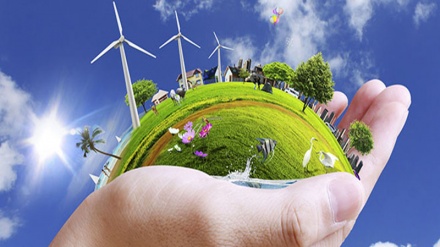We only have one planet to live On (13)
Welcome to the 13th weekly episode of the series We Only Have One Planet to Live On. Today, we will discuss about the negative impacts of construction of artificial islands on the seas’ environment.
Artificial islands are man-made installations which are surrounded with water and are located above the largest sea waves. They are situated in an especial geographical location for a long and unlimited period of time, or for an especial duration, or even for a number of functions. In accordance to the United Nations Convention on the Law of the Sea, all countries maintain the right to construct islands and other installations which are allowed in the view of international rules and regulations in the high seas and within their territory. However, based on the 60th article of this convention, if a number of changes occur in the environment via artificial islands, the environment of other countries should also be taken into consideration and no harm should be imposed on the rights of coastal countries.
In the past 40 years, several countries, especially those who are short of land for construction of buildings, have focused on these marine projects. The first floating marine city was constructed in Japan in the year 1975 AD. This project which was referred to as Aquapolice included a large and floating underwater base made of steel which covered an area of roughly one hectare, at a height of one thousand meters. Today, such islands are observed in Austria, Canada, Denmark, Hong Kong, and Persian Gulf littoral states.
In many countries, these structures have been used for development of infrastructures such as airports, ports, and highways, in addition to reconstruction of local regions, and establishment of tourist attraction sites, and residential locations. However, environmentalists opine that these artificial islands seriously and negatively impact the ecosystem of seas; the most evident example of which is the artificial islands which have been built in the Persian Gulf waters.
Persian Gulf covers an area of roughly 230,000 square kilometers. It is linked to the Indian Ocean via the Strait of Hormuz, and is situated in a warm region. The temperature of southern Persian Gulf waters at times reaches 37 degrees Celsius in summer season. Upon the intensification of heat, the rate of evaporation of water mounts and reaches 140 million liters per annum. This region maintains a vast biodiversity. Persian Gulf region is home to more than 600 aquatic species, including 500 fish species, 15 shrimp species, and 5 rare turtle species, in addition to coral reefs, algae, and mangrove trees. This biodiversity has turned the Persian Gulf into one of the rare regions in the world.
On the other hand, Persian Gulf region maintains rich oil and natural gas reserves. Thus, the transportation of 25,000 huge oil tankers has imposed serious harms to this region’s environment. However, what has generated major concerns in the recent years in relation to the Persian Gulf region’s environment is construction of artificial islands by a number of Persian Gulf littoral states. Construction of these residential and recreational islands has piled up pressure on this sea’s ecosystem and has worsened the conditions of its environment. Each of the artificial islands’ projects in the Persian Gulf can bring about several environmental consequences. Meanwhile, development of artificial islands across the United Arab Emirates coasts has led to major environmental repercussions.
The construction of artificial islands in Persian Gulf was carried out by the United Arab Emirates government as of the year 2001. This government has placed the development of 325 artificial islands in Persian Gulf waters on its agenda. However, upon the construction of the first island, the depth of the catastrophe was shown. According to informed sources, for this project, more than 1.5 billion cubic meters of sand, and 87 billion tons of stones were shifted; and a billion tons of stones was transported to the site of the project for its completion. Experts believe that completion of the first phases of construction of artificial islands wiped out coral reefs, and coastal nests of turtles, and transformed transparent waters into muddy waters. This is because coral reefs naturally filter waters and whenever coral reefs are eliminated naturally the filtering process of water declines.
Although Islamic Republic of Iran maintains 1280 kilometers of coastlines in the Persian Gulf region, it has not constructed any artificial islands in the Persian Gulf waters. This is while some countries, such as the United Arab Emirates, have constructed artificial islands, destroying coral reefs in this region. The detrimental impacts of elimination of coral reefs have been imposed on the coasts of other countries, including Iran.
Meanwhile, the reaction of the UAE officials to criticisms leveled against construction of artificial islands by this country is questionable. The officials of one of UAE marine projects have claimed that their underway projects have not imposed any detrimental impacts on the ecosystem and the majority of the coastal coral reefs had already died, while the mud resulting from implementation of such projects will eventually subside and water will once again be cleared. This comes, while a senior environmentalist announced in the year 2005 that these construction operations, especially in the site of the first island, have been highly detrimental for the natural environment of Dubai.
Meanwhile, construction of artificial islands by the United Arab Emirates has also encouraged other countries to do the same, such that some other Persian Gulf littoral states have also taken measures to construct artificial islands. For instance, Bahrain has placed construction of two artificial islands on its agenda. Qatar is also constructing an artificial archipelago with facilities for residence of 30,000 people.
Construction of artificial islands leaves a negative impact on the bedding of seas and existence of aquatics, causing irreparable damages on the environment.
Undoubtedly, any change in the environmental structure of any region, especially any change in seas, leaves irreparable harms on the existence of animal and plant species.
Although in accordance to international rules and regulations, governments can construct artificial islands in their territory; the protection of Persian Gulf’s environment is a topic of importance which all countries in this region should take into consideration. The regional agreement for protection of environment which was signed by all Persian Gulf littoral states in the year 1978 notes that Persian Gulf waters are international waters and all countries should respect its territory, which all neighboring countries are forbidden from taking any development which would endanger these waters.
MR/SS


